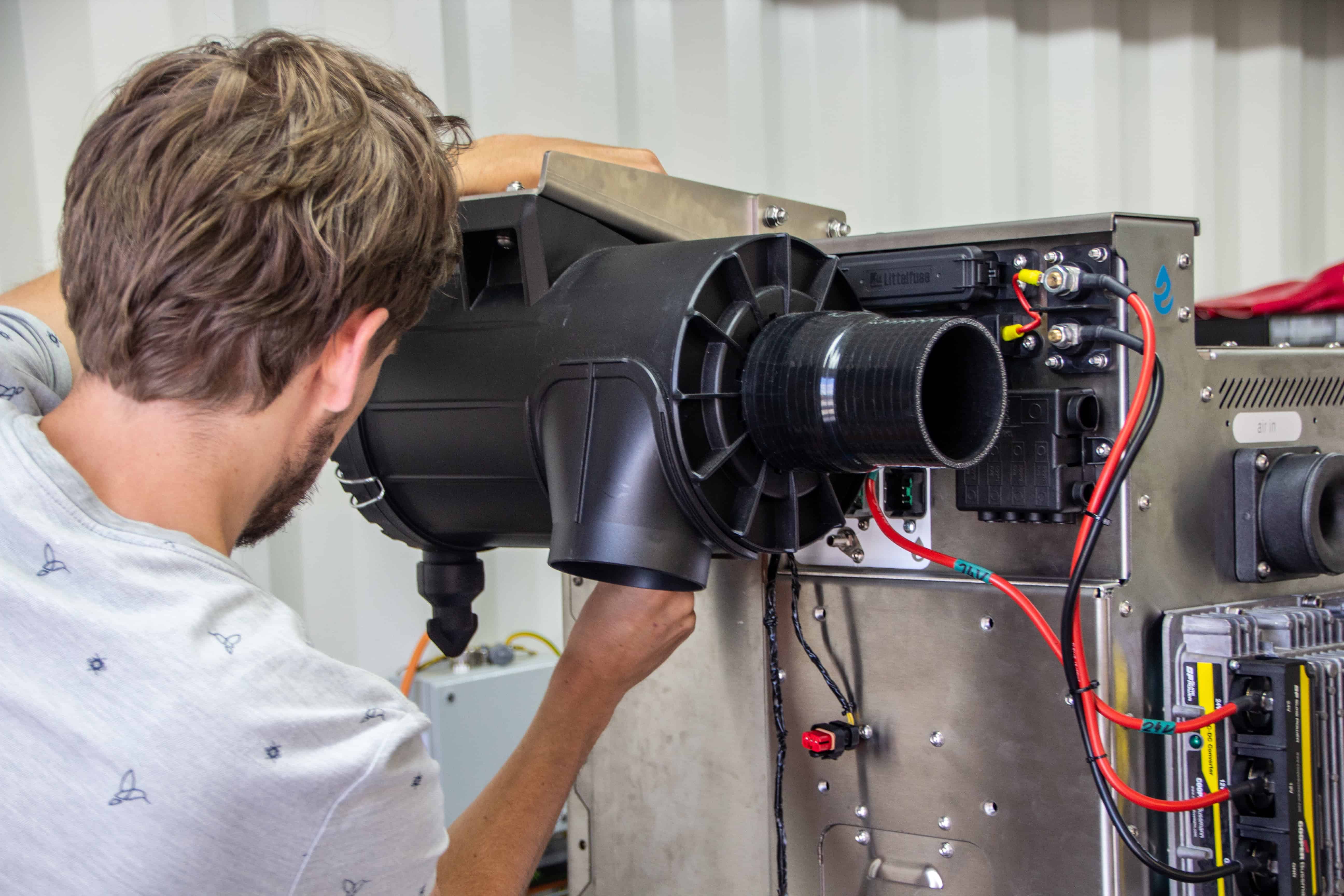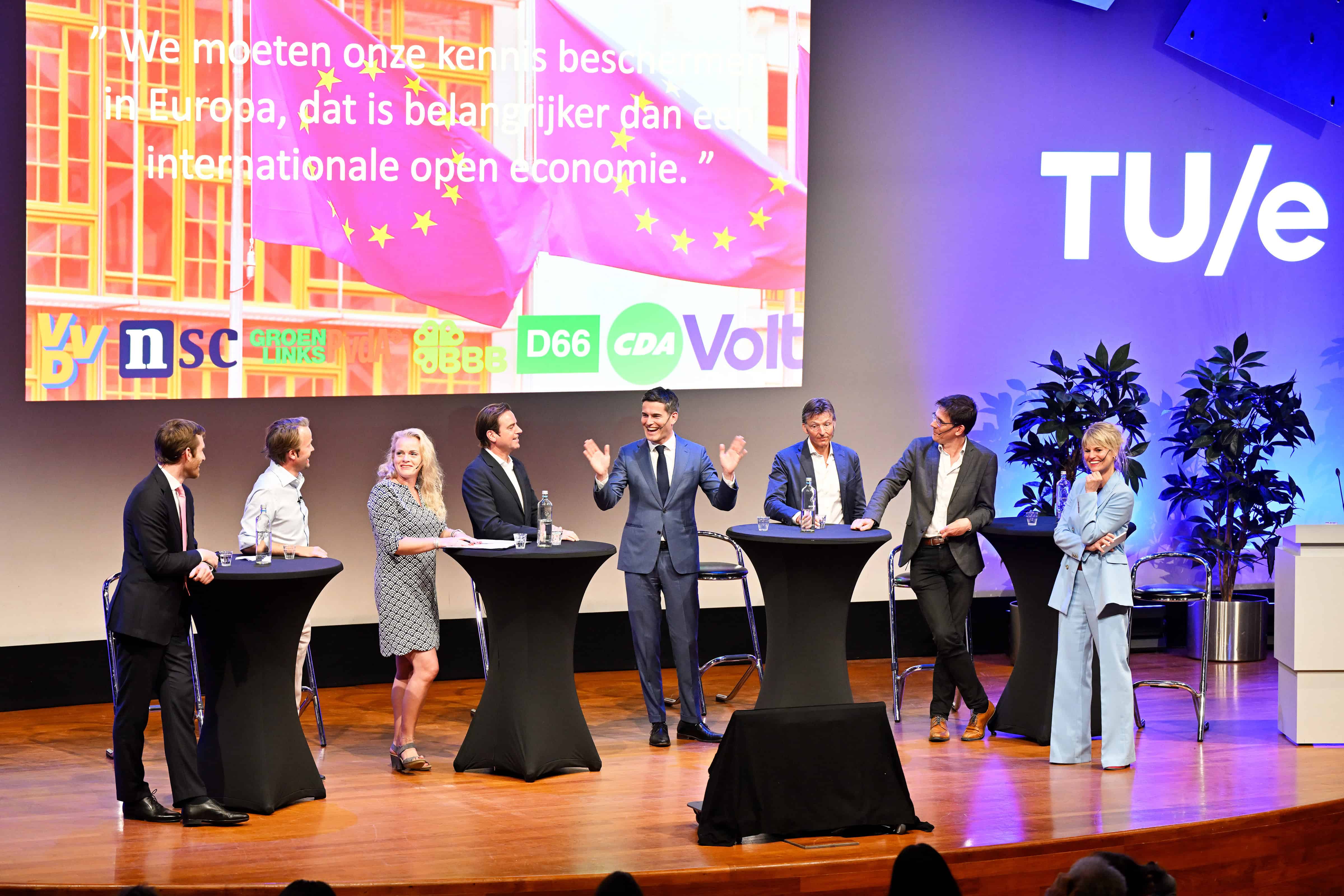
Solar cells in the facades of buildings or car roofs. Electric cars, or cars running on green hydrogen. Capturing and reusing CO2. There are plenty of technologies and applications capable of speeding up the energy transition. What is needed above all are people. People from different backgrounds and with different levels of education. That’s where the crux of the matter lies, according to the three southern provinces of the Netherlands in their ‘Human Capital Strategy‘. Under the auspices of the European innovation program for the south of the Netherlands, OPZuid, the Energy Learning Community project started in 2019.
In this project, Summa College, Avans University of Applied Sciences and Eindhoven University of Technology (TU/e), and small and medium-sized companies are working on solutions for the energy transition. Companies that are already committed to that transition, such as Ominus (which develops software for smart cities and energy systems), LEDdriven which makes electronics for charging stations, and Team RED a student team that has the idealistic goal of accelerating the energy transition, just as the Exentr foundation does.
Unprepared
“What we also want is for education and industry to connect with each other even more effectively,” says Mark Cox, project manager from the TU/e. “The transition from vocational education (MBO)to higher vocational education (HBO) or from higher vocational education to academic education (postgraduate/university) is often still a hurdle for many students. You can also see that when a student has graduated and starts working, they are actually unprepared for the industry in some respects.”
To encourage that preparation for industry, TU/e, for example, has several facilities, such as Innovation Space, The Gate and the Honors Academy. There, students learn to work with people from different disciplines, and during their studies they already get to work with companies on social issues. There are also similar programs at Avans and Summa College. Collaboration between students from MBO, HBO and WO is still sporadic, Cox notes. Yet that is precisely what the ELC project is all about.
It is this collaboration that Cox believes is the unique quality of the project. “You see that an acceleration is taking root. TU/e students tend to use their brainpower and their laptops to solve problems, while students at universities of applied sciences and vocational colleges are more practical. As an example: the calculation of an axis. A TU/e student will model this in software and reach a conclusion. A more practical approach is taken by someone from a university of applied sciences who, for example, takes the advanced computational rules from a book of tables. While a vocational student sometimes takes an even more pragmatic approach. They look at it from their own experience: ‘I need that axis from that piece of steel and I’m going to weld it‘. If you get them to tackle a problem together, you see that processes generally run much more efficiently. They make use of each other’s strengths and don’t keep going n circles in their own world of familiar solutions.”
Tuk Tuk
At the start of the project, people said to Cox that it would not work out to put students from MBO, HBO and WO together, precisely because of that difference in education levels. “Well, I put them all together anyway and they get along just fine. They are young people who are caught up in the throes of life. They have a special kind of curiosity about other people’s knowledge and skills, and they complement each other perfectly. Actually, they are getting a kind of preview of very different worlds in a very amicable way, without having to be embarrassed and admit that they can’t do something or don’t know something.”
They bought a 56-year-old Tuk Tuk from Thailand. “A hugely polluting thing.” A Tuk Tuk basically has the same propulsion system as any other vehicle, Cox explains. “Whether it’s a scooter, car or airplane, there’s an engine in all of them, an energy source and a transmission between these.” With the Tuk Tuk project, Cox wants the students to learn from each other in order to work with the latest insights and developments.
Peek into the future
“A TU/e student tends to work on techniques of the future quite often.” In the project, they share their knowledge with HBO students, among others. “HBOers are used to working with knowledge of the present. For example, from books that are often older and do not cover the latest developments. By working together with TU/e students, vocational and higher education students get a peek into the future. Reciprocally, TU/e students get a peek into actual practice.”
Energy efficient solutions are being worked on with the knowledge from the Brainport region and from the electrical engineering students from Avans University of Applied Sciences from Breda and Den Bosch, Summa Automotive College and faculty of electrical engineering at the TU/e. “Those students from Summa know exactly how to assemble and disassemble a Tuk Tuk, what to watch out for and how to optimally maintain or overhaul the vehicle. Students from Avans do the calculations, testing and building. A TU/e student will design something new.”
“Take, for example, a classic solar cell. A student from Avans University of Applied Sciences says, ‘We’ll buy a PV cell on the market and run tests with it.’ The TU/e student looks more at what types of solar cells are currently under development. ‘Can we use this knowledge and expertise to do something that has not been done before?’ You shouldn’t ask the average TU/e student to install a PV cell on the roof of a Tuk Tuk. However, someone at Summa College knows exactly what to pay attention to so that it looks good and is safe. Students share that knowledge with each other in this project.”

Pitch
In several different groups, 30 students worked on solutions to make the Tuk Tuk more sustainable. One group explored how to get the maximum energy from a PV cell. Another group looked at the changes in solar radiation while the Tuk Tuk is being driven. How can you optimize the electronics for that?
The students pitched their solutions to each other late last month. Cox was particularly struck by the creativity and enthusiasm of the students. “Each group had a completely different approach, they complement each other really well.” The students are now building prototypes that they are going to test in the Tuk Tuk. “That way, they can compare the various solutions in a very practical way.”
Ultimately, Cox wants to speed up the progression to a transportation concept that delivers social impact and offers a commercial perspective. “We are bringing those components together. Business administration students, electrical engineering students and Summa students who know how to service a vehicle.”
The projects involving the various students will run until the middle of next year. Cox expects the parties concerned to keep going after that. “People see the added value of it. There are set hours for the project participants. But people are putting in more hours because it is worthwhile.”








